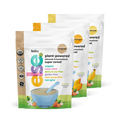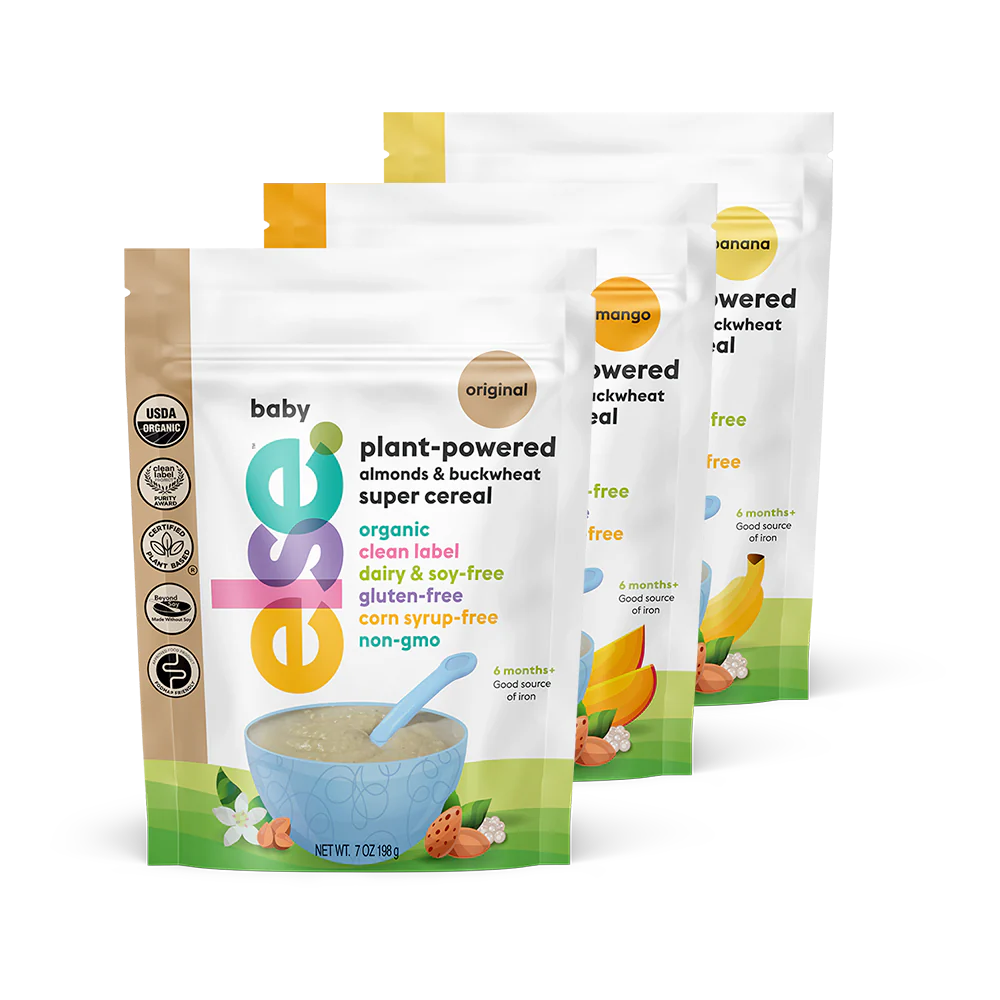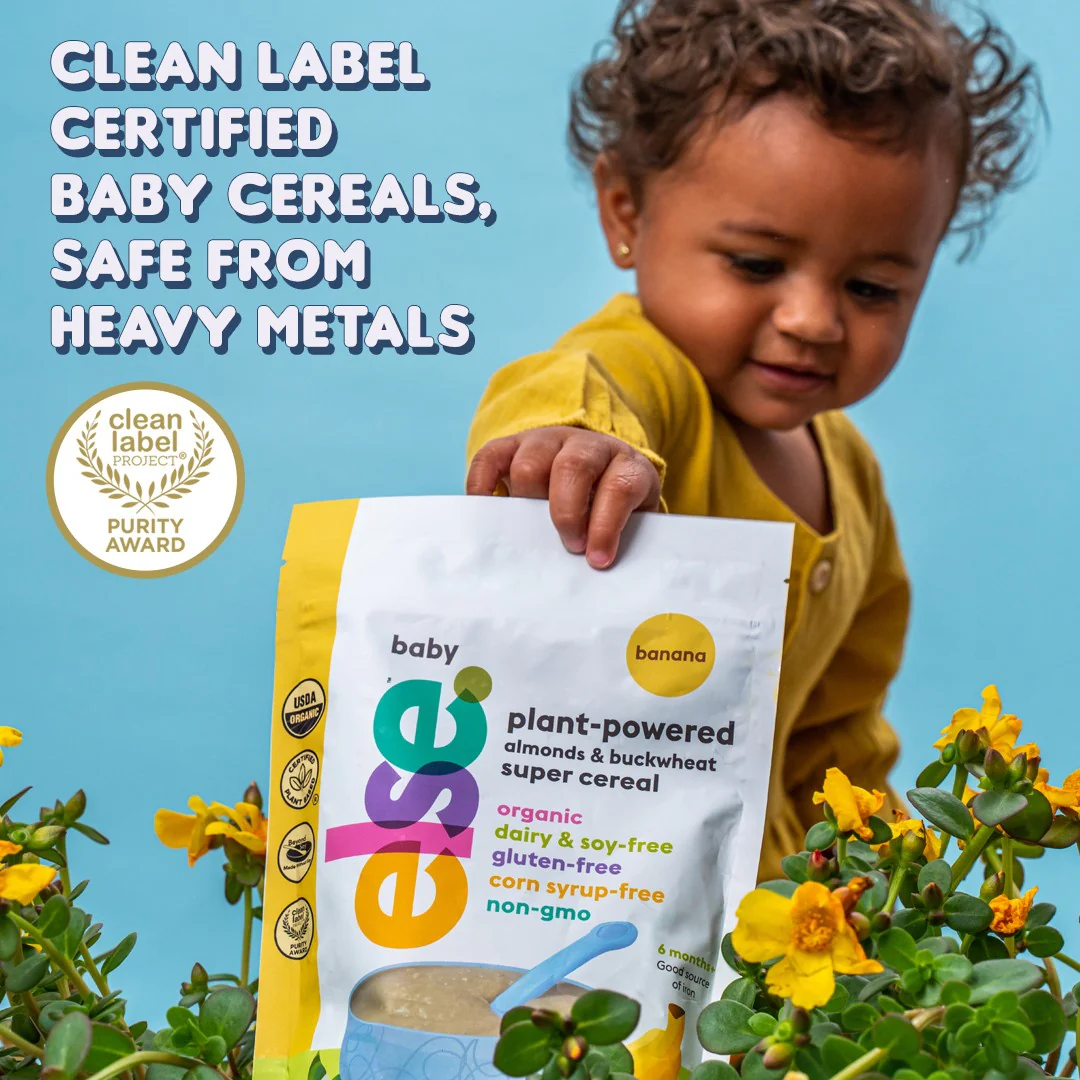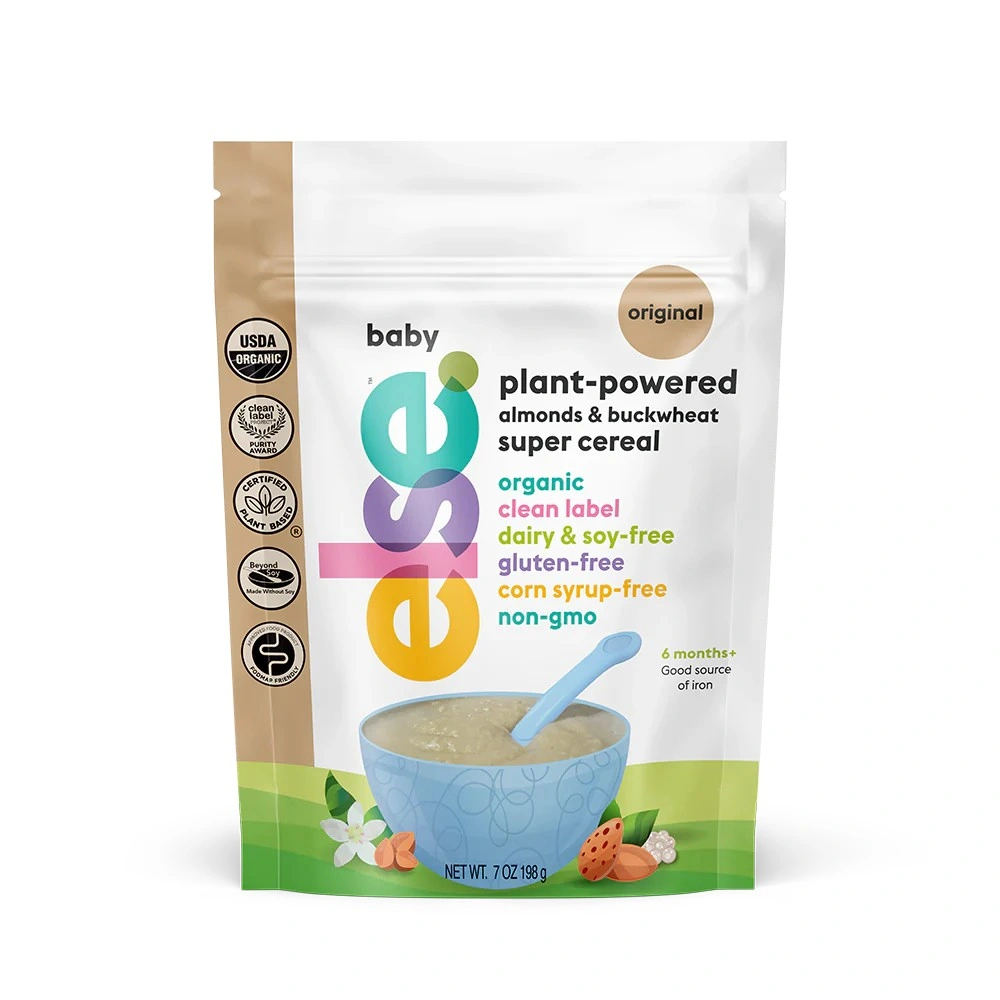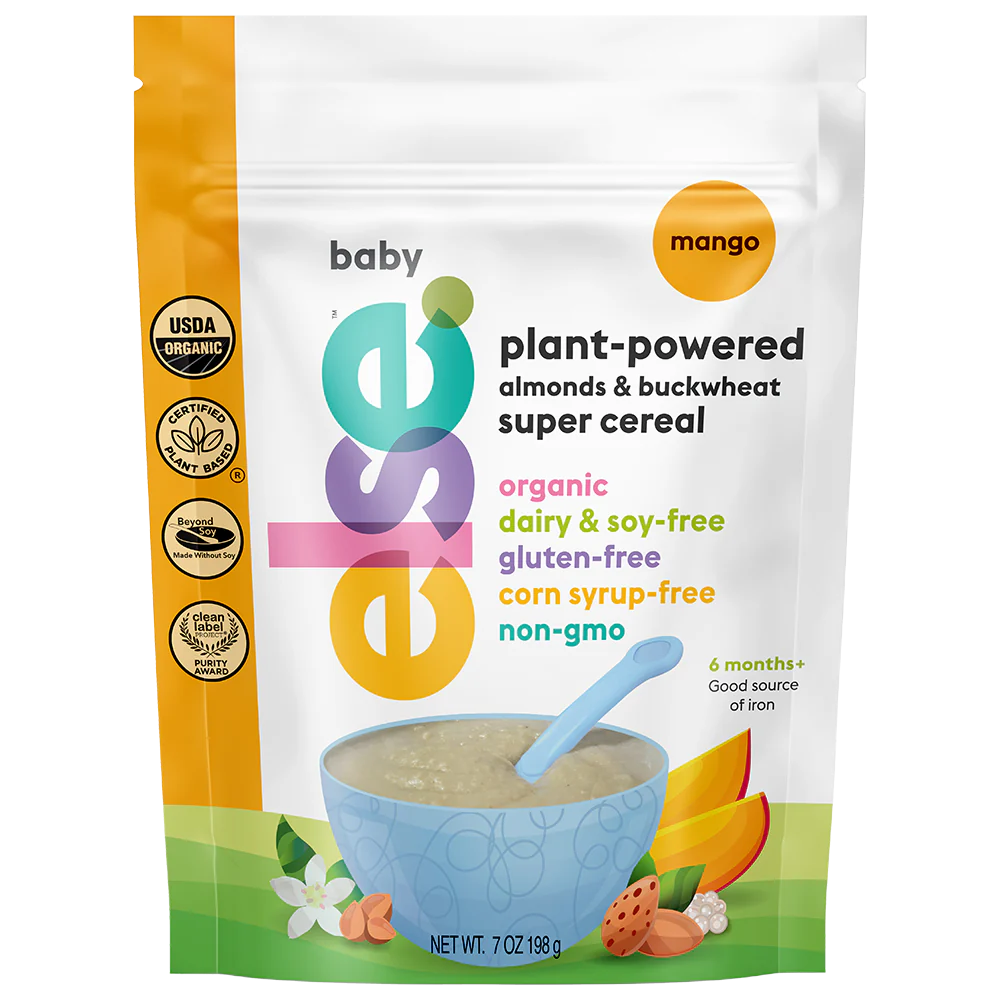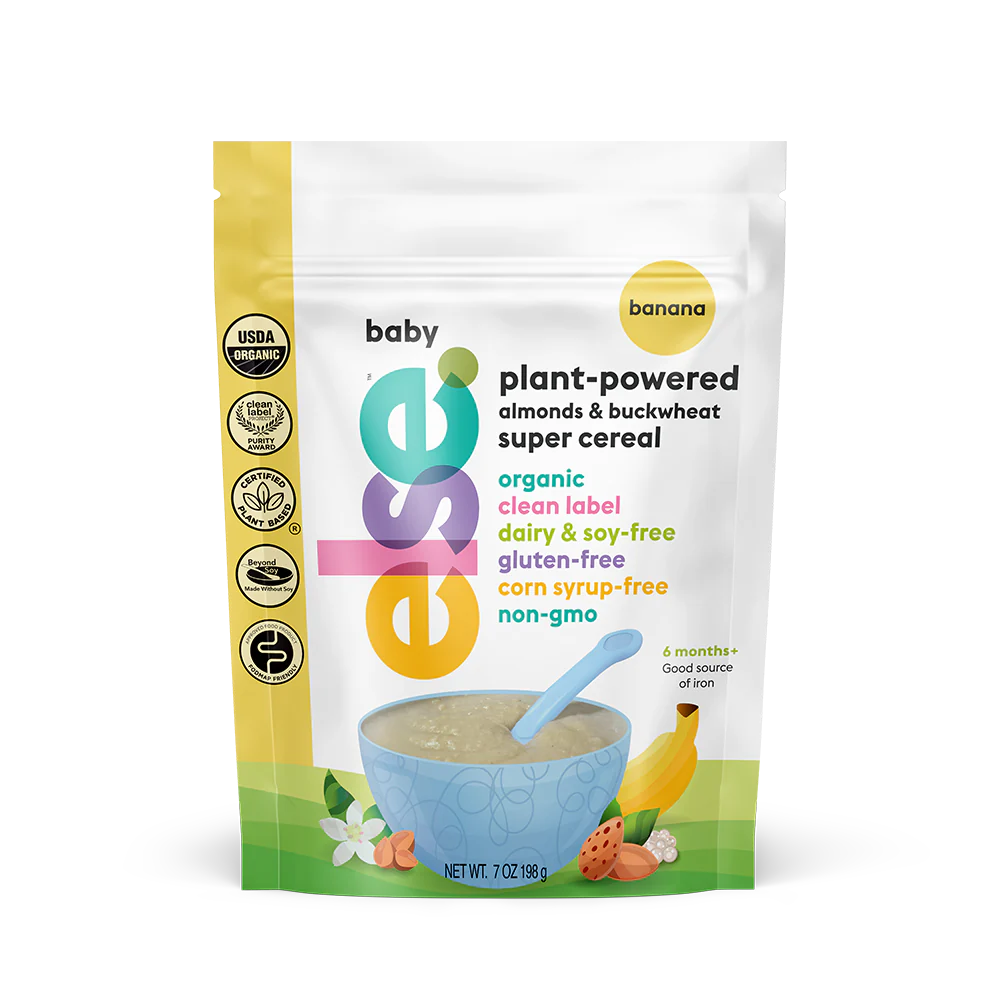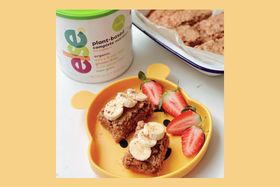How to safely introduce allergens to your baby
Learn the best practices for introducing allergens to your baby and minimizing the risk of allergies.
Published May 28, 2024

With the prevalence of allergies on the rise, it’s hard to know when the best time is to introduce your baby to allergens. On one hand, you may be tempted to delay the introduction to certain allergens in hopes that this will keep your baby safe.
Delaying the introduction of common allergies may even increase the likelihood of developing allergies later in childhood. Therefore, the recommendation is to introduce allergens to your baby between six and 12 month of age, but not before four months.
» To provide a safe and nutritious alternative, consider this plant-based baby cereal
Is My Baby at Risk of Food Allergies?
More recent research has shown that the early introduction of allergens is the best way to prevent an allergy from developing. Before introducing food allergens, it’s important to know if your baby is at risk of developing food allergies.
While a food allergy can develop at any point in your child’s life, the following are factors that place your child at higher risk:
- Eczema: Children with eczema, characterized by dry patches of skin are at increased risk of developing food allergies.
- Asthma or Hay Fever: If your child has either condition they are more likely to develop food allergies.
- Family history: Babies with a sibling or a parent who has allergies are at higher risk for developing food allergies.
If your baby has any of these risk factors, you may consider consulting a pediatric allergist before introducing food allergens.
» Learn more about common food allergies and how to avoid them
Food Intolerance vs. Food Allergy: Understanding the Differences
Unlike an intolerance, a food allergy can cause a serious or even life-threatening response through any contact with the allergen. This can include eating a small amount, touching, or even inhaling the food.
Therefore, it’s important to understand the differences between these two types of responses.
» Read more about the differences between milk allergy and lactose intolerance
Food Intolerance
A food intolerance means either the body can't properly digest the food, or that a particular food may aggravate the digestive system. Symptoms of food intolerance generally affect the digestive system and can include gas, cramps, stomach pain, nausea, and diarrhea. The immune system is not involved.
Food Allergy
A food allergy occurs when the body's immune system sees the food as an invader. This immune response leads to an allergic reaction in which chemicals like histamine are released in the body.
Symptoms of allergic reactions seen on the skin include hives, itchiness, and swelling, while gastrointestinal symptoms may include vomiting and diarrhea.
Respiratory symptoms may include throat tightness, hoarseness, coughing, and breathing problems. Respiratory symptoms may accompany skin and gastrointestinal symptoms, but don’t usually occur alone.
Anaphylaxis is a serious allergic reaction that can happen very quickly. Symptoms of anaphylaxis may include difficulty breathing, dizziness or loss of consciousness. Anaphylaxis requires immediate treatment with an injection of epinephrine.
» If you're considering a plant-based diet for your allergic little one, read this guide
How to Introduce Allergens to Your Baby?
According to the American Academy of Allergy Asthma & Immunology there is no reason to restrict specific allergens during pregnancy and while breastfeeding.
Breast milk is the best way to nourish your baby as it is least likely to trigger an allergic reaction. It may even reduce eczema, wheezing, and risk for cow’s milk allergy.
If your baby is at risk for food allergies and you’re unable to breastfeed, hydrolyzed infant formulas are often recommended as hypoallergenic substitutes over cow’s milk and soy formulas.
» Read everything about hydrolyzed infant formula here
Introducing Solid Foods to Your Baby
Around 4 to 6 months of age, your baby may be showing signs of readiness to begin eating solid foods as a complement to breastfeeding or formula-feeding.
Signs may include an ability to sit with minimal support, strong head control, interest in food, and an ability to pick up objects and bring them to the mouth.
During this time, single-ingredient foods like iron-fortified baby cereal, pureed carrots, avocado, and bananas can be introduced one at a time. You can introduce a single-ingredient food every 3 to 5 days as tolerated.
» Learn how to introduce solid foods with this complete guide perfectly
This process enables you to identify and eliminate any food that causes an allergic reaction.
While it’s possible to be allergic to any food, the following are the most common food allergens:
- Cow’s Milk
- Egg
- Fish
- Shellfish
- Peanut
- Sesame
- Soy
- Tree Nuts
- Wheat
These common allergens can be introduced at six months of age, after lower risk foods have been tolerated. In fact, delaying the introduction of these common allergens past six months can place your baby at increased risk of developing an allergy.
Tips for Introducing Allergens to Baby
Start with a very small quantity.
The smaller the quantity, the less severe a reaction may be. Begin with a tiny amount such as a ½ teaspoon of cooked egg mixed with breast milk, formula, or water.
If there is no reaction, try gradually increasing the amount over the next few days. Once you’ve ruled out an allergy to that particular food, try to offer it to your baby as frequently as you can.
Aim for regular exposure of common food allergens
After you’ve deemed it safe, ensure that the food is offered to your baby on a weekly basis in order to build up a tolerance to it.
Introduce common allergens at breakfast.
Most allergic reactions occur within two hours of eating the allergen. Introducing common allergens in the morning allows you the opportunity to observe your child and makes it easier to contact your doctor if a problem arises.
Introduce common allergies one at a time.
Introducing common allergens one at a time, allows you to determine which food was responsible for a reaction.
In What Order Do You Introduce Allergens?
There is no specific order on how to introduce common food allergens to your baby. Once you know your baby can tolerate a specific food, ensure to keep it in a weekly rotation.
The following are tips on introducing common allergens into your baby’s diet:
Peanuts
You may be hesitant to offer your child anything with peanuts given the prevalence of peanut allergies.
Peanut allergies in children are on the rise, with the greatest risk among babies with severe eczema or an existing egg allergy. However, studies have shown that the early introduction of peanuts can significantly reduce the risk of developing a peanut allergy later in life.
When introducing peanuts to your baby, do not offer whole peanuts or peanut butter as they are both choking hazards.
To introduce peanuts to your baby you can dilute smooth peanut butter with hot water, breastmilk, or formula and feed it on a spoon.
Puffs made with peanuts are another way to introduce this allergen.
» Take a look at this guide to peanut butter introduction
Egg
When can your baby eat eggs? You can offer your baby tiny pieces of scrambled egg or cooked egg can be mixed with hot water, breastmilk, or formula and fed on a spoon.
Milk
If your baby is being fed with a cow’s milk-based formula, then they are already being exposed to cow’s milk.
Many baby cereals contain skim milk powder and these can be used to introduce milk.
Additionally, yogurt or cottage cheese can be an easy way to introduce this allergen to your baby.
» Is whole milk better than toddler formula? Find the answer in this article
Soy
Curious how to introduce soy to your baby? You can offer soft tofu in tiny pieces or blended into a puree as a way to expose your baby to soy.
You can also steam and puree edamame or serve soy yogurt to your baby.
» Learn how to choose the best soy-based formula
Wheat
Baby cereals containing wheat flour can help introduce your baby to wheat. Additionally, you can cook soft pasta made with wheat and offer that to your baby.
Tree Nuts
Tree nuts can be tricky to introduce because there are many different kinds and introducing one doesn’t count as an introduction to all.
The main tree nuts that allergists recommend to introduce to your baby include almonds, cashews, pistachios, hazelnuts, walnuts, and pecans.
There is no particular order that tree nuts need to be introduced, but they should never be given whole as they are a choking hazard for your baby.
Tree nuts should be introduced using smooth nut butters like almond butter or cashew butter. You can dilute the smooth nut butter with hot water, breastmilk, or formula and feed it on a spoon.
Tree nuts can also be ground into fine flour-like consistency and mixed with cereals, fruit purees, vegetable purees, smoothies, or yogurt.
» Discover how to incorporate almonds into your baby's diet
Fish
Try introducing a variety of fish that your family enjoys to eat. For younger babies, you can blend steamed fish with other pureed vegetables.
For older babies, small pieces of soft, cooked fish can be served. You should avoid serving shark, swordfish and marlin as these fish have the highest level of mercury.
When serving fish, always make sure all bones have been removed before giving it to your baby.
Shellfish
If shellfish isn’t part of your family’s weekly meal plan, then there is no need to introduce it to your baby.
If your weekly meal plan does include some type of shellfish such as shrimp, crab, lobster, clam or scallop, then you can introduce it in the following ways:
- Steamed shrimp, soft cooked lobster, or soft scallops, can be cut into tiny pieces or blended with a vegetable puree
- You can also introduce lobster bisque or clam chowder (always avoid large chucks), assuming other ingredients such as dairy have already been introduced.
Sesame
Hummus is a safe and easy way to introduce sesame to your baby as many of the products also contain tahini (sesame origin). Some babies will develop contact reactions from the lemon juice, salt and garlic, but this is not a food allergy.
» Explore the benefits of sesame and other high-iron foods for kids in this guide
Early Introduction is the Best
The early introduction of food allergens is the best way to prevent an allergy from developing. While it may be tempting, delaying the introduction of common allergies may increase the likelihood of developing allergies later in childhood.
Your pediatrician is one of the best resources when it comes to making decisions about how to introduce allergens to your baby, so always talk to your doctor about what is best for you and your little one.
How long does it take for a baby to react on food allergen?
Symptoms of an allergic reaction usually occur seconds to minutes after your baby eats a food that they are allergic to, and they almost always occur within two hours of ingestion.
Symptoms of an allergic reaction may include:
- Colic (frequent, prolonged, and intense crying)
- Eczema
- Hives
- Itching
- Swelling of the face, lips, and eyes
- Digestive issues like vomiting and diarrhea
- Classic allergy symptoms (sneezing, runny nose)
What are the symptoms of severe allergy?
A severe allergic reaction also called anaphylaxis is possible. Symptoms of anaphylaxis generally occur right after your baby has been introduced to an allergen.
Symptoms of a severe allergic reaction include:
- Wheezing or difficulty breathing
- Swelling of the mouth or throat which may impair swallowing or breathing
- Choking which is a sign of respiratory distress.
- Loss of consciousness in which case 911 should be called immediately.
What should I do if my baby has an allergic reaction?
If your baby is showing signs of an allergic reaction you should stop feeding your baby the allergic food immediately and contact your doctor.
If your baby is showing signs of a mild allergic reaction, you should watch your baby closely and monitor signs for a severe allergic reaction and contact your doctor.
If your baby shows signs of a severe allergic reaction you should immediately administer epinephrine with an auto-injector (EpiPen or AuviQ) and keep track of the time you used the medication.
It's extremely important that your baby receive epinephrine immediately, as epinephrine is the only medication that can stop anaphylaxis.
You should call 911 immediately and state that your baby is having an anaphylactic reaction, and ask for an ambulance.
What steps should be taken if a baby experiences a second reaction?
It is important to note that your baby may develop a second reaction after the first anaphylactic reaction known as a "biphasic" reaction. A biphasic reaction occurs when symptoms improve, but then worsen, roughly 4 to 24 hours after the initial reaction.
If your baby develops a biphasic reaction, or if symptoms of the first reaction don't improve after your baby receives epinephrine, your baby will need a second dose of epinephrine from a second auto-injector (EpiPen or AuviQ).




